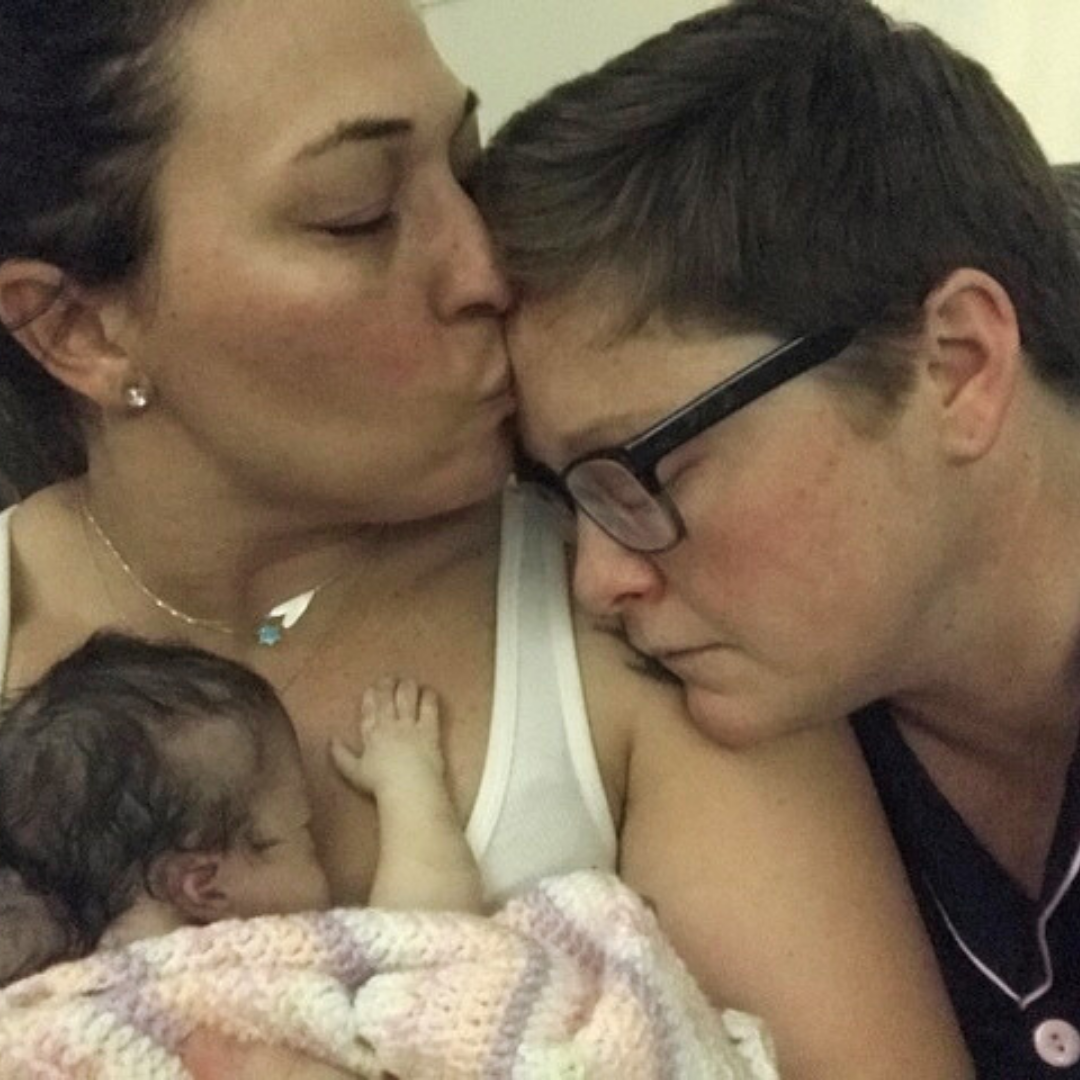Grief, In Our Own Words: Thirty-Six Hours of Forever: A Mother’s Story of Love and Loss
From Joy to Loss: The Heartfelt Journey of Beatrice Kathryn
By Rachel Alder
Half an hour before our OBGYN entered our tiny clinic room that day, my wife and I shimmied past her six-foot-two frame in the short, narrow hallway housing the ultrasound printer. I noticed several black and white images splayed in her large hand, the other hand absently waiting for more to fall from the machine. The look on her face told me everything I never wanted to know. A look similar to the one Seahawks fans made as the Patriots intercepted their game-winning touchdown on the one-yard line of the Super Bowl. A look not yet sad, outraged, or incredulous. Instead, a look of simple disbelief. Confusion. A collective rubbing of eyes, waiting for reality to come into focus again. But this was reality, and it was time to make it our reality.
Words That Changed Everything
Opening the door to our room, she briefly scanned the space; the images from our twenty-week anatomy scan layered together. I sat on the crackly-papered exam table; my wife was in the visitor’s chair against the wall. Dr. Merry’s eyes, and eventually her tush, settled on the circle swivel stool, the only seat left. She tilted back a bit and took a deep breath in and out. She looked into our eyes and then came out with it.
“Your daughter has an encephalocele, which means a tiny hole is leaking cerebrospinal fluid into a large membrane bubble on the back of her neck. The bubble is at least half the size of her head. Her head is strawberry-shaped, indicating that some of the skull bones are forming incorrectly. Her spine appears squished together and extremely curved. This curvature is limiting her overall growth, which is one of the reasons she is measuring weeks behind…Also, during the ultrasound, the tech could not identify your baby’s cerebellum or diaphragm, and only one of her two kidneys was seen. Because she is still so small, we can’t see what is happening well, but it appears she may have a malformation of the heart. She also has clubbed feet. I have never seen anything like this before in my practice. She will likely not survive a full-term pregnancy, or she will not survive birth, and if she does survive both of these, she will not live to a year old.”
Writing this today, almost seven years after our daughter’s birth and death, I can see the words falling from Dr. Merry’s mouth. Consonants and vowels strung together along staves, forming words and sentences, serenading us with a tune that made us want to rip our ears off. A tune with no melody, no harmony, and no rhythm, that she had no experience playing, and that the audience did not want to hear. When the tune was over, in one of her deepest moments of humanity, she said, “I actually don’t know what the fuck is happening here.” Never for a moment, pretending it was not as bad as it sounded.
The Weight of Infertility and the Fight for Parenthood
 Before that day, we’d never made it to twenty weeks. We’d made it to ten weeks, miscarried, followed by a D&C, a procedure to support the body’s natural healing process after a loss. For the two years prior, we tried over and over and over again to get pregnant. As two women, trying to conceive was not cheap and never happened by accident. Each month, one vial of frozen sperm plus the midwife or physician-assisted IUI, a procedure that supports natural conception, totaled a minimum of $1,000 for one try. Some months, we tried three times, literally hoping something (one) would stick. Bye-bye $3,000. Hello, negative pregnancy test. Each month, we waded through the waiting only to be met with the next two-week wait. We did that off and on, mostly on, from 2015 (the year after we married) to 2017, when this pregnancy finally stuck. But at the scan with Dr. Merry, we learned that while our daughter made it to the second trimester, making it to the third would be unlikely, and past the fourth, nearly impossible.
Before that day, we’d never made it to twenty weeks. We’d made it to ten weeks, miscarried, followed by a D&C, a procedure to support the body’s natural healing process after a loss. For the two years prior, we tried over and over and over again to get pregnant. As two women, trying to conceive was not cheap and never happened by accident. Each month, one vial of frozen sperm plus the midwife or physician-assisted IUI, a procedure that supports natural conception, totaled a minimum of $1,000 for one try. Some months, we tried three times, literally hoping something (one) would stick. Bye-bye $3,000. Hello, negative pregnancy test. Each month, we waded through the waiting only to be met with the next two-week wait. We did that off and on, mostly on, from 2015 (the year after we married) to 2017, when this pregnancy finally stuck. But at the scan with Dr. Merry, we learned that while our daughter made it to the second trimester, making it to the third would be unlikely, and past the fourth, nearly impossible.
A Choice Rooted in Love
Every doctor we encountered after that day offered to terminate our pregnancy many times. Stating they could give our sweet daughter, Beatrice Kathryn, something to stop her heart, allowing a safer delivery for me, and the greatest chance for me to birth future children. I appreciated their care and compassion, for both of us. But we could not stop her heart. It was not a decision our family could muster to make, after all, her heart was one of the few organs eventually determined to be completely healthy. So, I carried her to term and I would make that same choice now; I would make it a million more times. The only changes I would make are allowing more rest for myself, more grace to not fight the tears and the rage. Instead, l would let it all fly from my body, no matter how terrifying to witness. I would sleep more and work less. I would take longer walks in the woods, just me and her.
Finding Moments of Joy in the Time We Had
In the final weeks of my pregnancy, my wife and I took her to the Seattle Zoo, Mount Rainier, the beach, and where we got married. We took her to a beautiful resort on the northwestern tip of Washington state, where you can see Canada across the Salish Sea. We ate steak and window-shopped at a small town nearby. On the way home, we stopped at an animal shelter and showed her all the sweet dogs and kitties waiting for a new home, backdropped against the fact that we would never bring her home.
Birth, Breath, and a Fleeting Life
On delivery day, she came out and made the tiniest of sounds as they pulled her from the incision in my tummy. Immediately whisking her away to a different operating room and successfully intubating her after 20 minutes and half a dozen attempts. She and I met the second time, Earth side, in a hallway outside my room. I touched her long toes on her clubbed feet before they rolled her away for a quick ambulance ride to the NICU at Seattle Children’s. I was discharged from the hospital within 24 hours of my c-section, so my wife and I could be together as our sweet baby girl took her last breath at thirty-six hours old. Finally, no more tubes, pokes, prods, scans, or discomfort for her. Just skin-to-skin with her Moms, looking us square in the eye, until we encouraged her to let go, and she did.
Rachel Alder lives with her wife, two sons (5 and 3), and two kitties on an acre of land on the Kitsap Peninsula in Washington state, growing fruit, vegetables, and beautiful flowers from Bea’s Garden.

